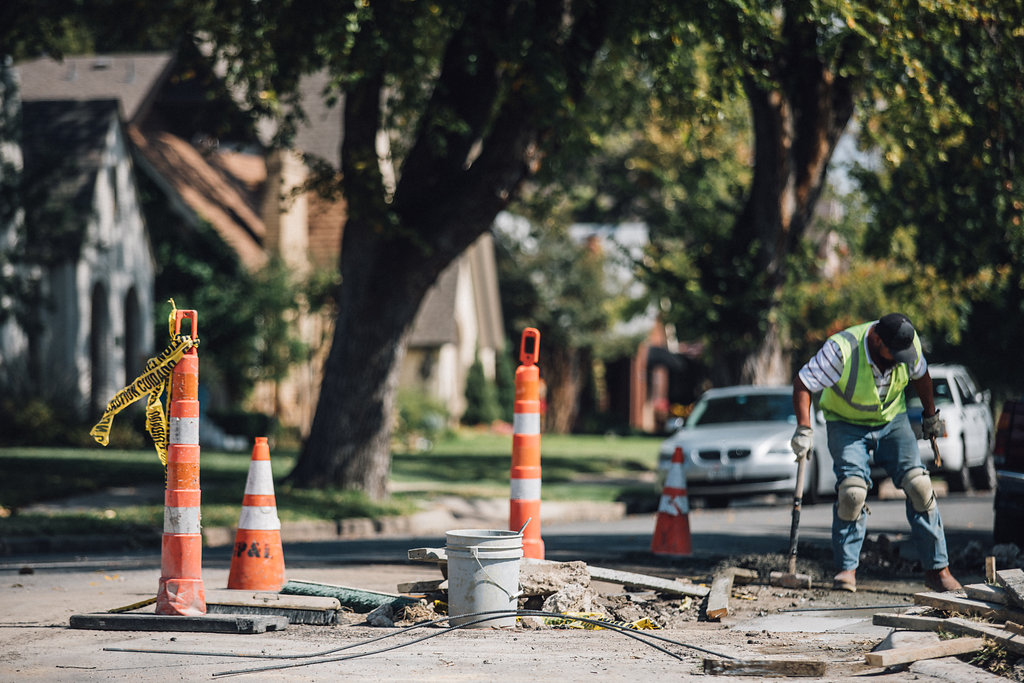Editor’s Note: This is a guest column by Charles Marohn, the founder and president of the nonprofit known as Strong Towns. He saw a FrontBurner article by Jon Anderson and wanted to expand upon it. It was interesting. So we’re running it. Strong Towns is also having a two-day symposium in Plano in early October.
A recent D Magazine piece by Jon Anderson entitled “Dallas Is Long On Maintenance Needs. Is There A Way To Generate More Intelligent Revenue?” correctly identifies a critical problem facing Dallas: the city’s perennial revenue shortage. “As a city,” writes Anderson, “we’re not generating enough revenue to keep the lights on.” He is absolutely right—but if anything he is understating the problem.
Dallas’s predicament is simple, and it is not unique. In fact, it’s one we see all over North America. After decades of growth, Dallas has built a tremendous amount of public infrastructure. But too much of that infrastructure serves places that do not generate sufficient wealth and thus tax revenue to maintain all of the public infrastructure that supports them—the roads, the pipes, the sidewalks, the lights, and so on. To put it more bluntly, Dallas’ development pattern is insolvent.
Finding creative ways to align revenues with expenses, as Anderson suggests, might improve the incentive to make efficient use of land. But it will not alone be enough to make Dallas solvent. What is really needed is a fundamental change in Dallas’s pattern of development, which for decades has provided a short-term illusion of wealth in exchange for enormous, long-term liabilities.
A data-driven example illustrates just how enormous these liabilities are. In Lafayette, Louisiana, I worked with city staff and the geoanalytics firm Urban3 to map out what parts of the city generated more revenue than expense (in business terms, this would be called profit) and what parts of the city generated more expenses than revenue (again, in business terms, this is considered a loss). We found that, to just maintain existing infrastructure—to simply tread water—a median family living in the median house in Lafayette would need to have their city taxes raised from $1,500 per year to $9,200 per year. That will never happen.
Those numbers are not an anomaly. Lafayette is, if anything, a typical American city. And that’s because of the backward way that governments nationwide account for their assets and liabilities, transforming infrastructure “investments” into ticking time bombs that are hidden away, visible nowhere, even on public balance sheets.
How is that possible? It has to do with something seemingly banal: accounting.
Here’s how municipal accounting should work. When a local government builds a new road, it recognizes that this piece of infrastructure comes with a future obligation for maintenance. Local officials can estimate, with a good degree of precision, when that obligation will come due and roughly how much it will cost. In normal accounting terminology, that would be considered a future liability. In a perfect world, cities would factor in those future liabilities, and the potential to pay for them, every time they made decisions about whether to build a road.
In the magical world of municipal accounting, however, that road is labeled an asset. And when it comes time to repair it, here’s what usually happens: city officials find that that “asset” hasn’t generated enough adjacent tax revenue to pay for its own maintenance. And now, the city needs to borrow that money.
Our infrastructure approach is destroying our wealth, not enhancing it. And as long as this is the case, it will not matter how we choose to raise revenue. You can’t tax what’s not there.
To avert disaster, we must make more productive use of our existing public investments. As you commute home today, take note of how far apart things are from each other. Look at the size of the parking lots. Check out the landscaped areas and storm water ponds. All of these areas are being served by incredibly expensive infrastructure, yet, more than likely, they’re creating no real wealth.
If we were really concerned about making productive use of our infrastructure, we’d obsess over that. We’d have emergency meetings at City Hall weekly and daily progress briefings on what was being done.
This shift in thinking is critical. We need to increase our productivity by (a) reducing our public obligations and (b) increasing the private wealth that makes it possible for us to meet those obligations.
And that means that Dallas should be thinking a lot more like one of its own suburbs: Fate, Texas. Leaders in Fate have made it a part of their development process to ask, of every single project, whether a minimum amount of private investment will be generated for each dollar of public liability assumed. It is their way of ensuring there will be enough tax base—in perpetuity—to meet the infrastructure maintenance obligations they are assuming when they take on new developments. Not just through the next election cycle, or until the current city planners have moved on to new jobs. Forever.
Dallas has had no shortage of growth over the past decades. What it needs now is productive growth.
Strong Towns, of which I am the President and Founder, is a national organization that is dedicated to helping communities across America grow financially strong and resilient. And as it happens, we are hosting a regional gathering in Plano on October 4 and 5, 2018, where national experts and local advocates will be discussing these and other issues facing North Texas communities. Come join us to connect with fellow Texans working toward a stronger Dallas. (For tickets, visit strongtowns.org/texas-gathering.)





